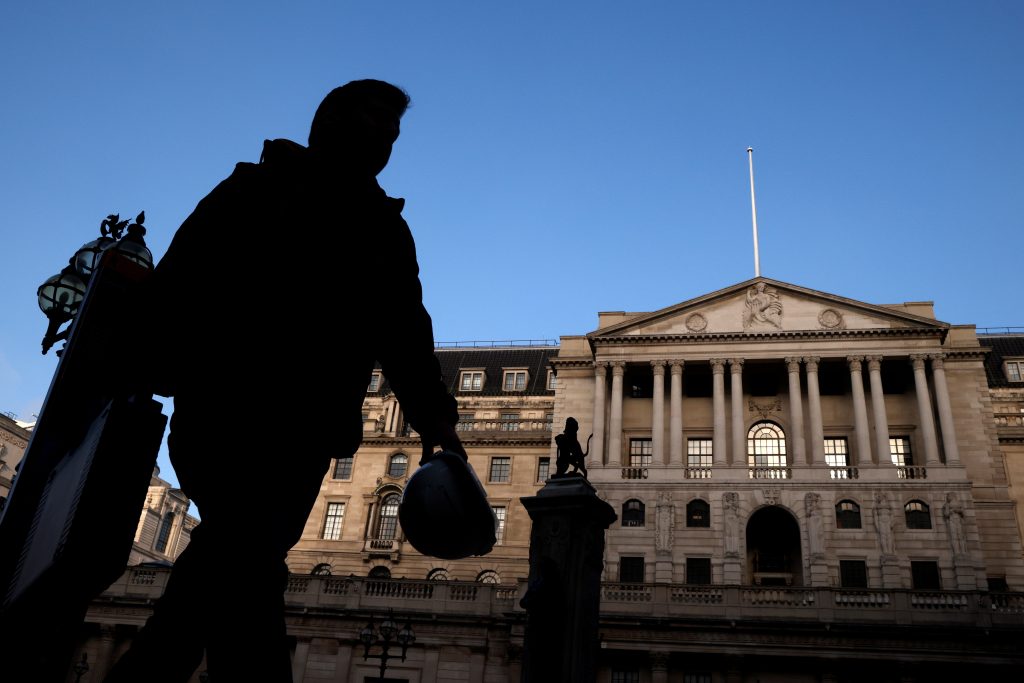Is the Next President About to Go Negative?
As negative rates are contemplated in the U.K., the U.S. may be next

After the chaos of the U.S. presidential election subsides, the global financial markets will move quickly to erect a new wall of worry.
At the top of the list will be rising COVID-19 caseloads, a stagnating global economic recovery and the prospect for new fiscal stimulus in the United States (i.e. operation print more U.S. dollars). On top of all that, reports suggest that negative interest rates will be back on the radar, too.
On Nov. 4, overshadowed by election drama, news broke that the Bank of England (BOE) was considering a move to negative rates, and that the British central bank has been canvassing financial institutions in the region to assess preparedness for such a development.
The move could come as early as next month.
A big reason that negative rates are back on the table is due to the fresh wave of coronavirus cases rolling across the Northern Hemisphere. Due to the intensity of the new surge, Great Britain was forced last week to reinstate economic lockdowns. Other countries, including the United States, may not be far behind.
With so much of the global economy already on unstable footing, the onset of additional lockdowns could represent the knockout punch for struggling businesses and individuals—especially without further government assistance.
For Great Britain, a move toward negative rates would represent an emergency step to try and stave off a deeper economic recession.
The purpose of low-interest-rate regimes is to boost borrowing and investment during periods of economic recession. Many of the world’s central banks adopted zero-interest-rate policies (ZIRPs) in response to the 2008-2009 global financial crisis in order to incentivize lending, spending and investment.
Historically, low-interest-rate regimes have demonstrated some degree of success in helping catalyze economic growth, but not without a cost. One of the biggest complications associated with low-interest-rate environments is that they are difficult to shed once adopted.
That’s because when businesses and consumers become accustomed to borrowing at extremely low rates, it can be extremely difficult to wean them away. At least, that’s been the case when such policies were enacted in countries such as Denmark, Japan and Switzerland during the past few decades.
It can be difficult enough to move away from zero-interest-rate policy (ZIRP) regimes once adopted—much less NIRP regimes.
For example, the United States dropped interest rates to zero for the first time in the country’s history during the 2008-2009 Great Recession. Fast-forwarding to the present, interest rates in the United States are once again at zero, and it’s almost impossible to envision American interest rates “normalizing” anytime soon.
But unlike central bankers in the United Kingdom, leaders at the United States Federal Reserve (i.e. the “Fed”) continue to maintain they aren’t considering adopting a negative interest rate policy (NIRP) anytime soon. But that stance could come under serious pressure if other global central banks start moving to do so ahead of them.
U.S. Effective Federal Funds Rate (2005-2020)
Much like the real economy, which has become increasingly interdependent due to globalism, cross-border finance is highly sensitive to changes in the system. It’s almost impossible for a central bank—especially one as prominent as the BOE—to make such an unprecedented interest rate move without significant global implications.
If the BOE takes rates negative for the first time in British history next month, that decision will undoubtedly domino and impact not only close neighbors in Europe, but also allies and trading partners overseas.
Investors and traders should therefore start familiarizing themselves with the potential implications of a global trend toward negative rates. This is important not only from a portfolio risk management standpoint, but also because of the new investment and trading opportunities that might be unlocked as a result.
To learn more about negative interest rate policy, readers are encouraged to review a past installment of Futures Measures on the tastytrade financial network, as well as to review a previous Luckbox post focusing on this topic.
Sage Anderson is a pseudonym. The contributor has an extensive background in trading equity derivatives and managing volatility-based portfolios as a former prop trading firm employee. The contributor is not an employee of Luckbox, tastytrade or any affiliated companies. Readers can direct questions about any of the topics covered in this blog post, or any other trading-related subject, to support@luckboxmagazine.com.



















